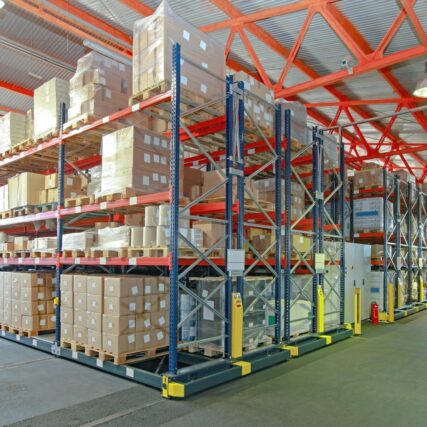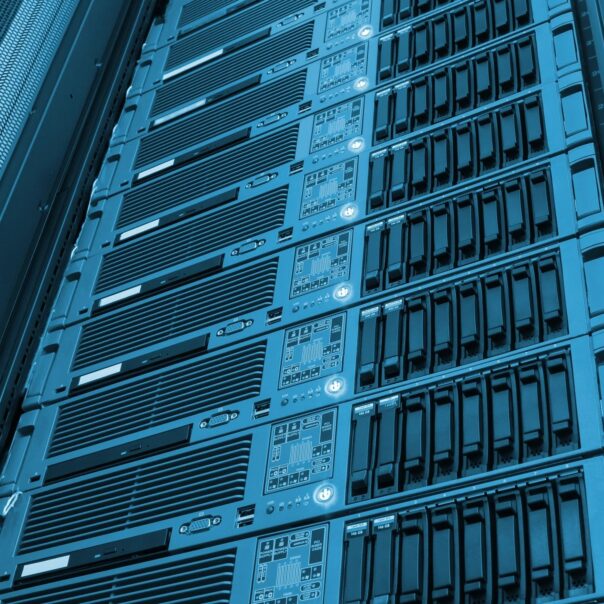E-Commerce and Integration
If your business relies on E-Commerce, you’ve had to find ways to work around the struggles that come with making sure the information you present to (and collect from) your trading partners is accurate, up-to-date, and relevant.
Automation is a bad word in many organizations (and full automation is often difficult to achieve), but we’ve helped hundreds of small-to-large organizations patch holes, automate problematic transactions and information transfers, and streamline efficiency and accuracy by automating where possible and helpful.


System Availability and Security
One of the most common (and understandable) objections that people have about SAAS (Software as a Service) or Cloud systems is the lack of control (over both security and data availability). These are legitimate and profound concerns, but sometimes the full context is not well understood. Modern Cloud technology is often far MORE secure than a home-grown network CAN be. In many organizations, the biggest threat is the users themselves.
Inventory Management
The challenges surrounding inventory management don’t stop at tracking the physical aspects of your inventory–it’s also important to understand how the movement of inventory in your business affects costs of all kinds. Some costs are measured in intangibles like customer satisfaction. Other costs involve employee morale, vendor relationships, and lost opportunities.
Inventory is a complex and costly aspect of many businesses. Mismanagement of inventory can easily become the difference between profit and loss–understanding your situation fully is crucial for a business owner.


User Licensing
The software that runs your business SHOULD be available to all users that need it. In most cases, 20% of your users do 80% of the work in your systems. 50% of your users may only be 5% of the total usage. Per-user licensing doesn’t take this inequality into account, and forces the choice of reduced user counts (and reduced software availability and usefulness) to be economical.
CRM
Customer Relationship Management (CRM) software has become a mainstream focus of business software–it fills a key niche, and typically is available to mobile users. This is crucial for most sales organizations who use mobile professionals.
While CRM fills a crucial need, it has also been terribly expensive, and hasn’t been easy to integrate with other systems. To keep costs down, organizations typically limit the number of users, isolate the system, and rely on spreadsheet-based reporting to manage the sales staff only. This leads to islands of information, problems with transactions, and lack of efficiency throughout the sales process.


EDI
Over the past twenty years EDI, has moved from a requirement for only the largest corporations to a more mainstream part of even smaller companies’ supply chains. As we move forward, EDI is gaining momentum, and may likely become a real requirement for most business-to-business transactions in the near future. Understanding and successfully implementing EDI is complicated and can be very expensive.
With any real EDI transactional volume, manual processing of EDI documents quickly becomes unmanageable. Many trading partners assess steep fines for inaccurate data, and shipping labels (like UCC-128) and other detailed ASN or Invoice documents have many detailed data points that can easily have transposed or mis-keyed data. It is easy for users to cross link transactions in the ERP/Shipping systems with the EDI transmissions, and the resulting fines erode or eliminate any gross margin on the transaction. Automation of document creation and transmission saves time and effort, eliminates transposition and data entry errors, and vastly reduces fines for mistakes and timing issues.
Supply Chain Management
If you’re familiar with the phrase (Supply Chain Management), then you likely have a pretty good grasp on how many variables can affect efficiencies and costs and how difficult it can be to optimize things.
Even if a single person were to manage all aspect of purchasing, inventory management, requirements planning, and production, the tracking of information becomes incredibly difficult if more than a few SKUs, Vendors, or production runs are in play at a time. Add multiple users/people, ramped-up production volume, hundreds (or thousands) of SKUs, and large numbers of PO’s or Vendors, and coordination becomes the only goal. Optimization is (at best) a unicorn–without the right tools to track data points and provide accurate visibility to decision makers.


Order Management
A good Order Management system facilitates all of the customer-important areas (results, pricing, time frame) while automatically making the information available to the customers. A good solution will enforce order accuracy as well as provide communications–this works best when digital automation and communication can eliminate tedious and unproductive tasks.
Regardless of how you see your business operations, your customers usually have only have one functional perspective–they want predictable results at an acceptable price at a preferred timeframe. Outside of those main key areas (and as long as you’re ethical and responsible about you conduct business), a smile and a friendly attitude should ensure a happy relationship.
Warehouse Management Systems
Warehouse Management Systems (WMS) have traditionally been very expensive and have been islands of information. When there is a steep cost to a product like this, the perceived benefits and costs need to be fully understood before a decision is prudent, but it’s very common for a good WMS and Inventory Management System that work together to produce benefits and tangible cost savings that pay for the cost of the new system within 3-6 months of usage.


Subscriptions
Subscriptions bring a completely new approach to the pricing of software–effectively an expensable rental agreement. While the initial emotional response has often been to see the “purchase”/maintenance model as ownership, stopping payments prevents future upgrade or advancement of the software.
In reality, both models are priced to the advantage of the software company, but subscriptions can offer serious pricing advantages with the right selection. Software as a Service (SAAS) and other subscription options allow for a better way to plan and manage ERP expenses going forward.
Working Remotely in the Cloud
One thing has become clear: It is time to move to the cloud. The technology is here, and it has been here for a while. While it may not seem like a necessity when running your business day-to-day, it very quickly becomes a necessity when there is any sort of disruption. Having your system accessible to everybody who needs it, when they need it, is vital to continuing business through a crisis.
There are many reasons why you should make the switch to a full cloud ERP, including accessibility, consistency, and the ability to grow.

